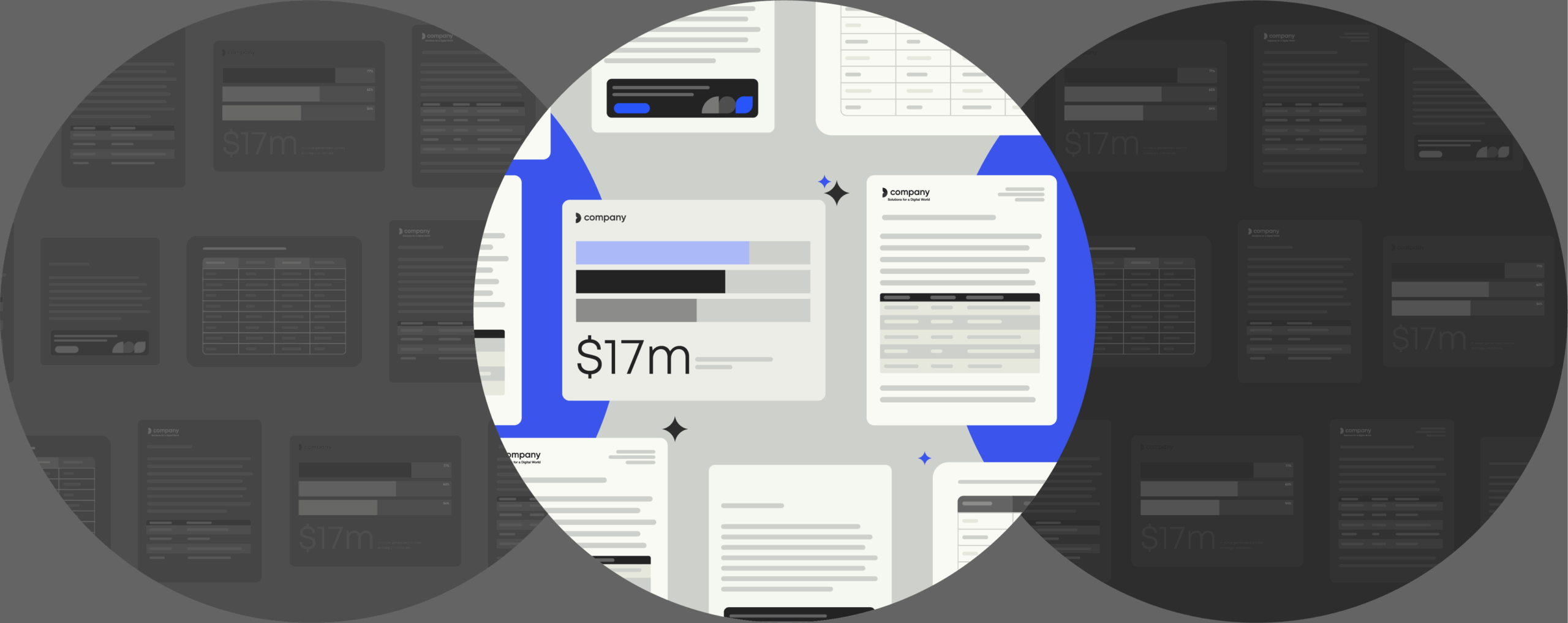How to do enterprise digital asset management

Intro
Enterprise digital asset management is increasing in importance as large companies are amassing brand files, documents, presentations and other digital assets on a scale never seen before. This can become a mess if the files aren’t stored, maintained, and distributed in a systematic way.
With the right strategy and software solution in place, enterprises can go from chaos to cosmos in just a few steps. That’s what today’s session will focus on: how enterprises can manage their digital assets.
What is enterprise digital asset management?
Before we can look closer at the world of enterprise digital asset management (DAM), we first have to define a digital asset. A digital asset is a file that you can download to your computer or upload to the cloud. It can be any file in any part of a company. Within branding, for example, digital assets could be written documents such as brand guides, visual imagery like logos, or audio assets like jingles.
Enterprise digital asset management is the process of managing these digital assets in a large company, an enterprise. Enterprise DAM includes storing, organizing, and distributing digital assets.
What are the key elements of enterprise digital asset management?
Stay ahead with updates
Be the first to know about new features and integrations. Explore updates that make your daily work smoother and more connected.
While digital asset management for small companies can be handled manually within a shared cloud-based drive, the scale of enterprises often demand software to properly manage digital assets. Enterprise DAM software is built up of different components that enable asset management:
1. Asset database
Enterprise DAM software has an asset database, a library, where users can upload digital assets to a central hub all employees can access. Often, this is a secure cloud-based drive that can be scaled up according to the volume of digital assets that the enterprise has.
2. Asset organizer
Enterprise digital asset management software systems have an organizing component that helps categorize digital assets in different folders. Assets are tagged with metadata to make them easily searchable.
3. Asset retriever
Once assets are categorized and tagged, enterprise employees can quickly locate digital assets by searching for keywords using the DAM system’s file retriever.
4. DAM access manager
Some employees only need access to specific digital assets. Others, like brand managers, need admin rights so that they can edit, archive and manage digital assets. Within the DAM system, administrators can assign rights to different employees to control who gets to see what.
5. Asset editor
Many enterprise DAM systems also offer editing features. Here, brand managers can edit digital assets and instantly roll out the updated asset to all employees.
6. Asset compliance
Brand compliance platforms like Templafy integrate enterprise DAM solutions into its platform. Once employees are producing content using the digital assets, the compliance module will continuously check to ensure digital assets comply with legal and branding guidelines.
7. Application integration
Templafy and similar digital asset management solutions integrate with the enterprise’s office application, such as Office 365 or Google Workspace. This enables employees to gain access to company-approved digital assets while continuing to work within their preferred editing application.
Why you need an enterprise digital asset management system
Digital asset management software is important to implement for larger companies and enterprises. As most work today happens online, lack of effective ways to manage digital assets can open enterprises up to a range of risks:
Loss of assets
If digital assets are saved locally, put in hard-to-find shared drives, or not tagged with searchable keywords, files can get lost. This can mean that time is wasted developing assets that will not be used.
Inconsistent branding
Without a central place to store and distribute company-approved assets, enterprises may experience inconsistency in its branding. This can be detrimental to brand value as lack of consistency can decrease trustworthiness. 71% of consumers are more likely to purchase from a brand they trust, and without a consistent brand, enterprises can lose out on potential revenue.
Reputational risk
Digital assets need to be managed to make them comply with guidelines and regulation. Without brand governance and compliance procedures, enterprises can become vulnerable to reputational risk which can be damaging to the brand.
The future of DAMS: How AI can save valuable time
Enterprises across the globe are implementing DAM systems as the need for fast and easy access to the right assets grows with the volume of digital assets.
One of the newer features that has enhanced digital asset management in recent years and will continue to do so is AI tagging. With AI tagging, enterprises can save time on manually producing metadata for their digital assets and instead automate this process. AI tagging software works by automatically analyzing the content of the digital assets and assigning metadata to it, making it easier to locate.
The best enterprise digital asset management software
Acquia DAM is an enterprise digital asset management software service that helps brands manage and distribute assets across different teams within the organization. The tool offers a suite of tools such as AI-powered auto tagging that makes digital assets easily searchable.
Templafy is a document generation platform that seamlessly integrates with your DAM solution. In turn, this will allow you to increase the ROI of your solution and adoption of company approved DAM assets. It is widely used among large enterprises for not only managing digital assets, but monitoring the content production to help employees create on-brand, personalized documents that are compliant with internal and external guidelines.
When comparing the two enterprise digital asset management solutions, reviewers at software review site G2 found that Templafy is easier to use, set up, and administer than Acquia DAM.
Why Templafy is the go-to enterprise digital asset management platform
There are several reasons why Templafy is one of the primary choices for enterprises looking for DAM software. Here’s a few key benefits of using Templafy:
- Integration: Templafy’s DAM solution seamlessly integrates into employees’ existing workflow to make them more efficient by giving direct access to company-approved digital assets without the need for switching tabs.
- Compliance: Unlike other brand management platforms that only offer digital asset management, Templafy monitors the content production process to verify that assets are used according to company guidelines, effectively automating compliance.
- Security: Templafy’s platform is one of the most secure in the industry. The platform runs periodic penetration tests, continuously scans for vulnerabilities, and backs data up with Microsoft Azure to ensure maximum security.
enterprise digital asset management
How is digital asset management software implemented in an enterprise?
A digital asset management solution for enterprises can be implemented in a few steps.
- Get a product tour
Once an enterprise has located the DAM solution it wants to use, a product tour can be scheduled so that administrators can assess whether the solution is right for their enterprise. - Educate employees
Before the DAM solution is implemented, employees should be educated in how to use the new system. This ensures that the new system is well-received once onboarded. - Upload assets to the DAM system
The enterprise is onboarded to a central hub where all digital assets are uploaded. - Organize
Digital assets are sorted to provide an easy overview and tagged with relevant metadata to ensure that assets are easily searchable. - Make compliant
With a solution like Templafy’s that supercharges DAMs by monitoring the use of digital assets in the content production process, digital assets are checked against company guidelines to ensure compliance.
Case: How Condeco use Templafy to manage digital assets
Condeco is the market leader in meeting room scheduling and workspace reservation solutions. The company needed simplified access to its templates and digital assets as well as a faster way to update and distribute content.
Condeco implemented Templafy to enable all employees to quickly and easily locate the right digital assets in one central hub and work within pre-approved company templates. This resulted in a more consistent and professional brand profile.
“We’ve now taken away the excuse of ‘I didn’t know where to find it’ as the latest document and templates are now provided in the place they work,”
Condeco’s Creative Marketing and Brand Director Lauren Robertson says about introducing Templafy to employees.
Use Templafy to manage enterprise digital assets
Templafy is one of the leading brand management platforms on the market. With Templafy’s DAM library, enterprises can effectively manage digital assets and ensure compliant content production. Schedule a product tour and start implementing an enterprise digital asset management system in your company.



